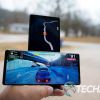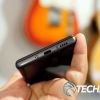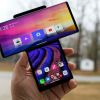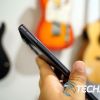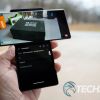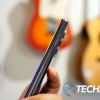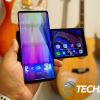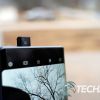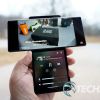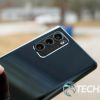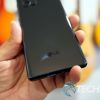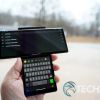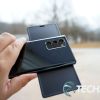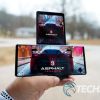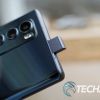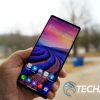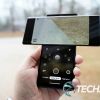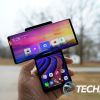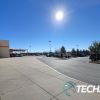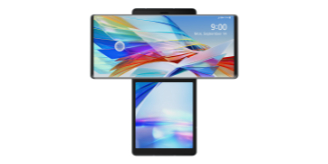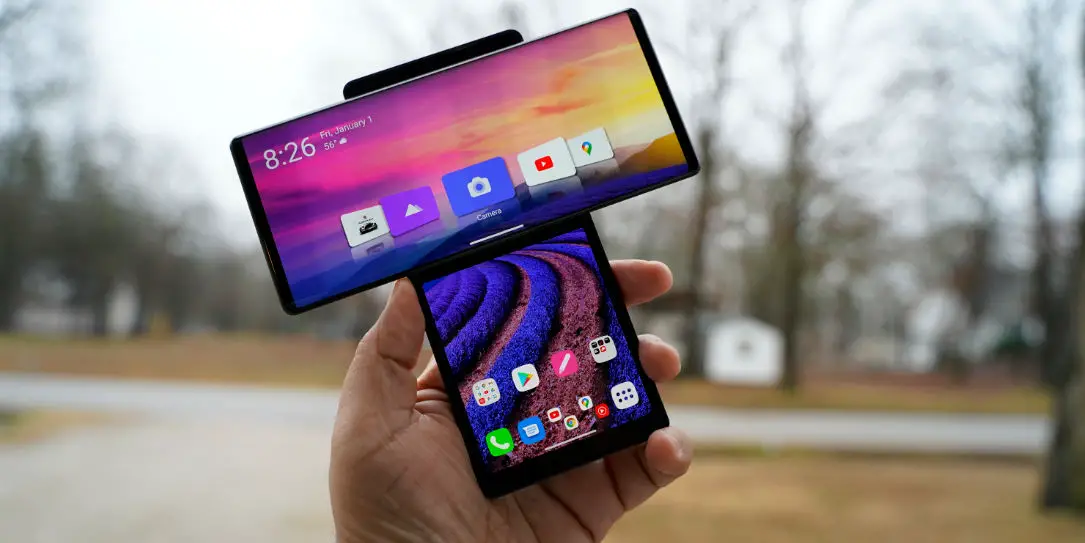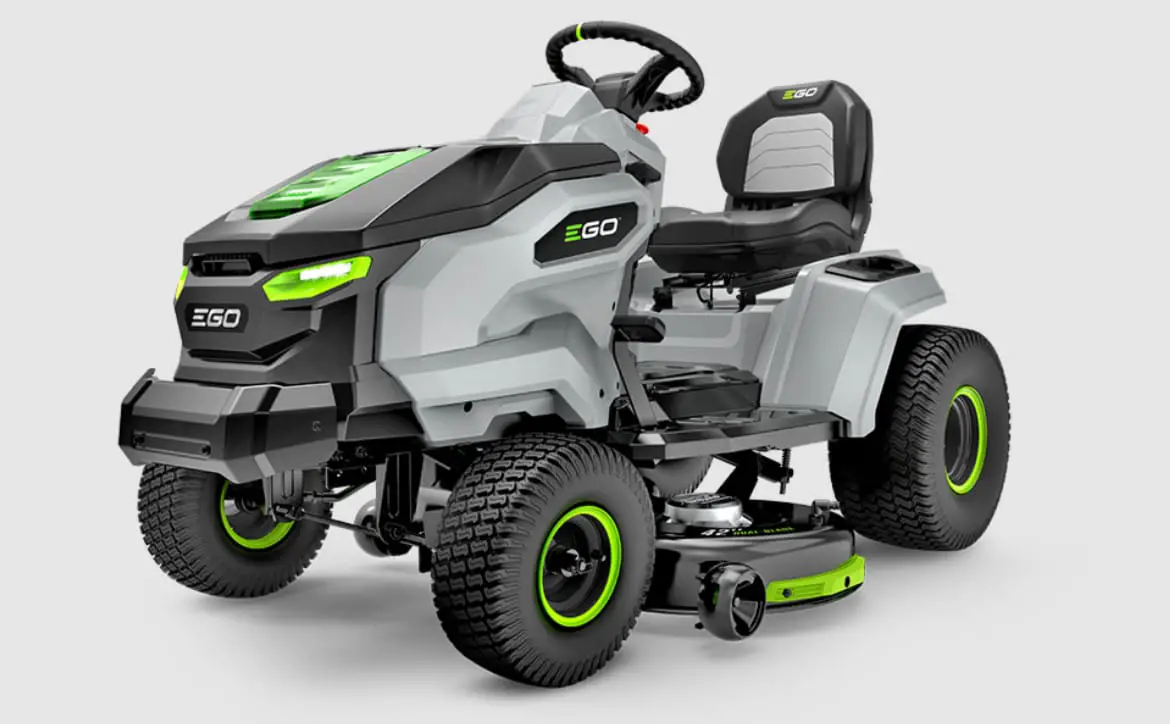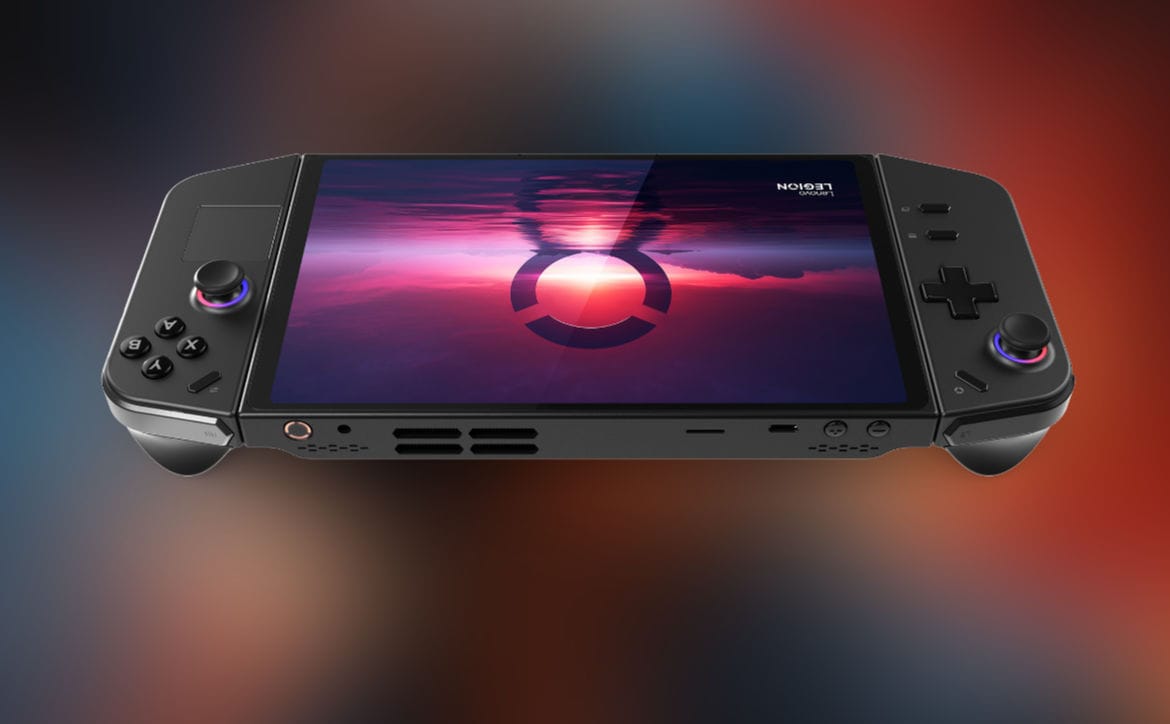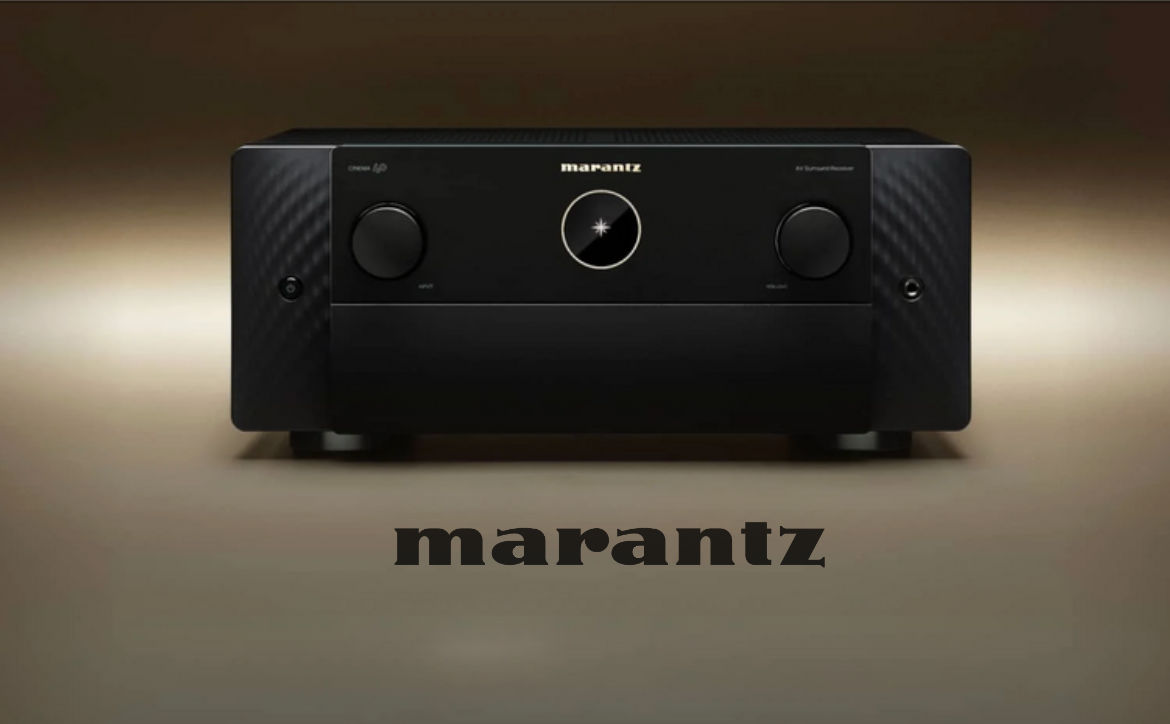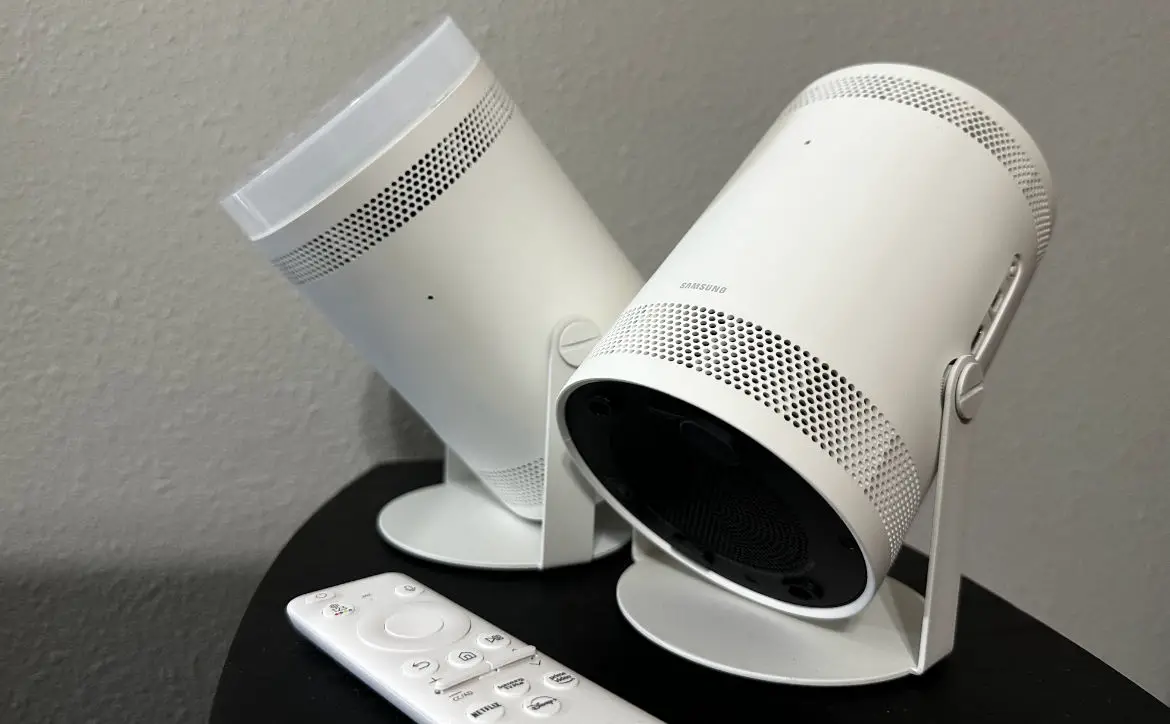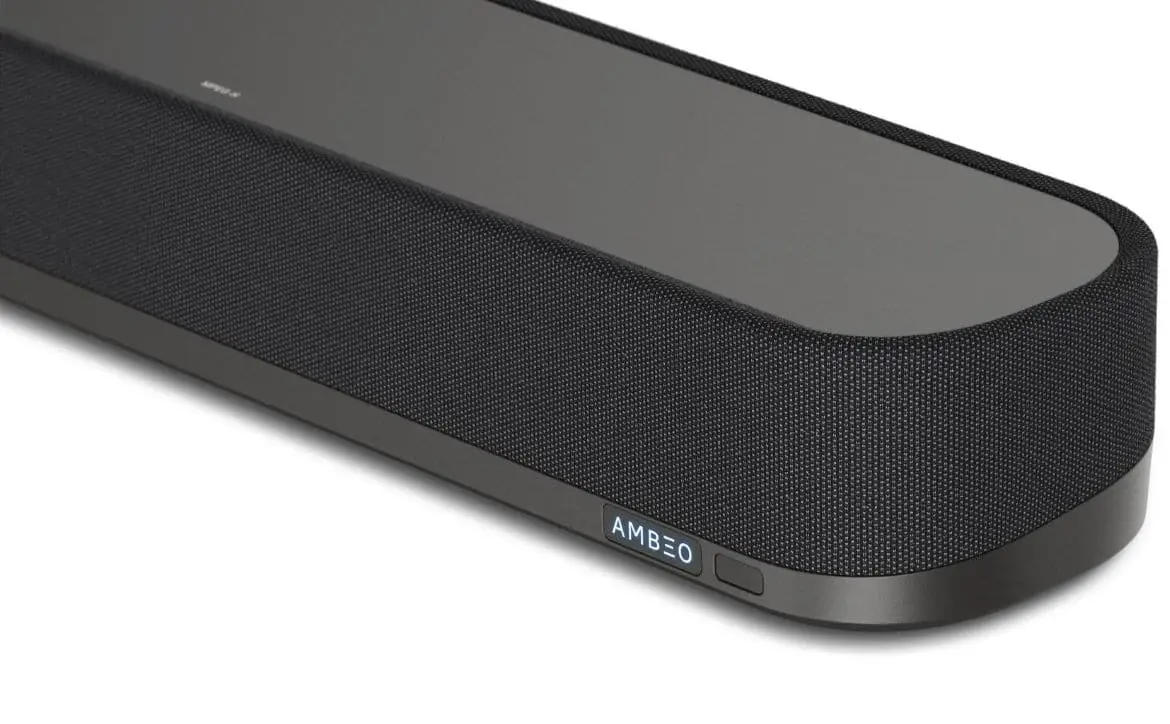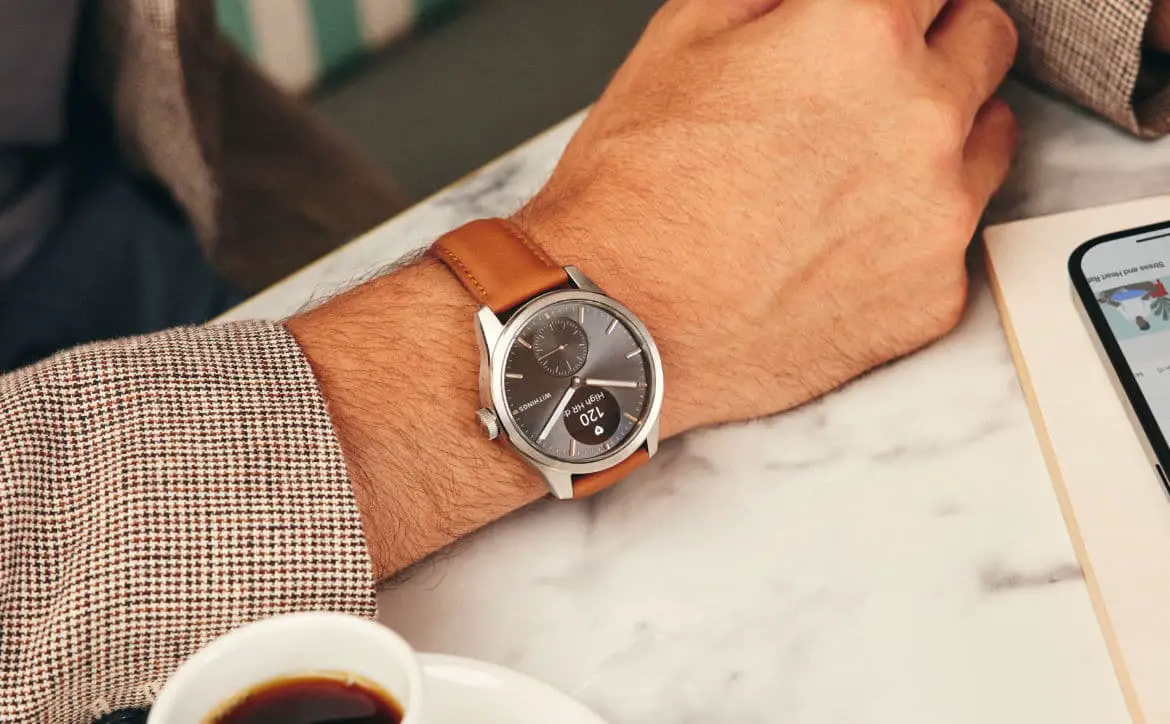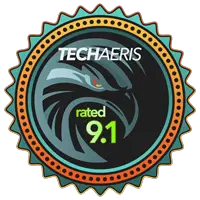
These days, smartphones are fairly similar, from their designs to their performance and specifications. For example, most of your flagship Android devices all run the same Qualcomm CPU and Adreno GPU. They also all feature similar displays and build qualities. But the LG Wing is different.
Different. That’s a word I haven’t used to describe a flagship Android smartphone in a long time. I’m almost tempted to use the synonym offbeat instead of different. Offbeat works better because the LG Wing is so unusual. This oddity of a smartphone is still blowing my mind, and I’m still wrapping my head around its possibilities. Oddities aren’t always a bad thing, though, and the LG Wing stands proud and tall in its own weird way.
Specifications
The LG Wing has the following features and specifications:
- Operating System: Android 10
- CPU: Qualcomm Snapdragon 765G (7 nm)
- GPU: Adreno 620
- RAM: 8GB
- Storage: 128GB/256GB
- Battery: 4,000mAh
- Battery-life: All-day
- Charging: USB Type-C port; wireless charging Qualcomm Quick Charge 4.0+, Fast charging 25W, Fast wireless charging 9W
- Security: In-display fingerprint sensor
- Display(s):
- Main: Rotating P-OLED capacitive touchscreen, 6.8 inches, 109.8 cm2 (~87.0% screen-to-body ratio), 1080 x 2460 pixels (~395 ppi density)
- Secondary: G-OLED, 1080 x 1240 pixels, 3.9 inches
- Rear Main Camera(s):
- 64 MP, f/1.8, 25mm (wide), 1/1.72″, 0.8µm, PDAF, OIS
- 13 MP, f/1.9, 117˚, (ultrawide), 1/3.4″, 1.0µm
- 12 MP, f/2.2, 120˚, (ultrawide), 1/2.55″, 1.4µm
- Front Camera: Motorized pop-up 32 MP, f/1.9, 26mm (wide), 1/2.8″, 0.8µm
- Audio: Speaker no headphone jack
- Dimensions: 169.5 x 74.5 x 10.9 mm (6.67 x 2.93 x 0.43 in)
- Weight: 260 g (9.17 oz)
What’s In The Box
- LG Wing
- USB-C charging cable
- USB-C Qualcomm Quick Charge 4.0+ wall wort
- Manuals and Documentation

Design
Where do I even start with the design of the LG Wing? It’s really like nothing you’ve seen before yet has a familiarity to it that makes you comfortable. You wouldn’t even know you were holding something different if it weren’t for the slight added thickness.
The thickness isn’t overwhelming, but it is enough to notice that this isn’t like other smartphones. The phone is noticeably chunkier in hand, it’s not uncomfortable to hold, but you can feel the difference between it and even the LG Velvet.
The build quality is outstanding, and all of the materials used feel very premium. There’s no question that LG put only its best into this device. The entire device is made up of glass and metal; it’s really well made and deserved of being called a flagship smartphone.
You’ll find a microphone and the pop-up front-facing camera on the top of the LG Wing; more on that later. Along the right side, you’ll find the volume rocker and the power button. Along the left side is the SIM card tray, and along the bottom is the USB-C port, speaker, and another microphone.
Around the back, you’ll find a mirror finish that does attract fingerprints like mad, a commonality of smartphones. The triple camera is also located on the back and is branded “Hexa Motion Stabilizer.”
Finally, the front display isn’t that much different from other LG phones, except that it rotates to the left to reveal a smaller display below. With just a bit of a push on the LG Wing display, you’ll reveal that 3.9″ display below. The action is seamless and very easy to perform. The only concern I would have is dust and debris collecting in these areas over time. I guess only long term use will be the true test. It’s this part of the design that’s still blowing my mind. It’s fresh, new, and some may see it as a gimmick, but there are some real uses for this design choice.
Overall, the LG Wing design is something special with that rotating front display and smaller display underneath. But the design is also pretty standard and familiar, making it easy to get comfortable with. I do have a concern about fine dust and debris affecting the display and pop-up front camera. We won’t know for sure what this will be like until we hear long term use reviews.
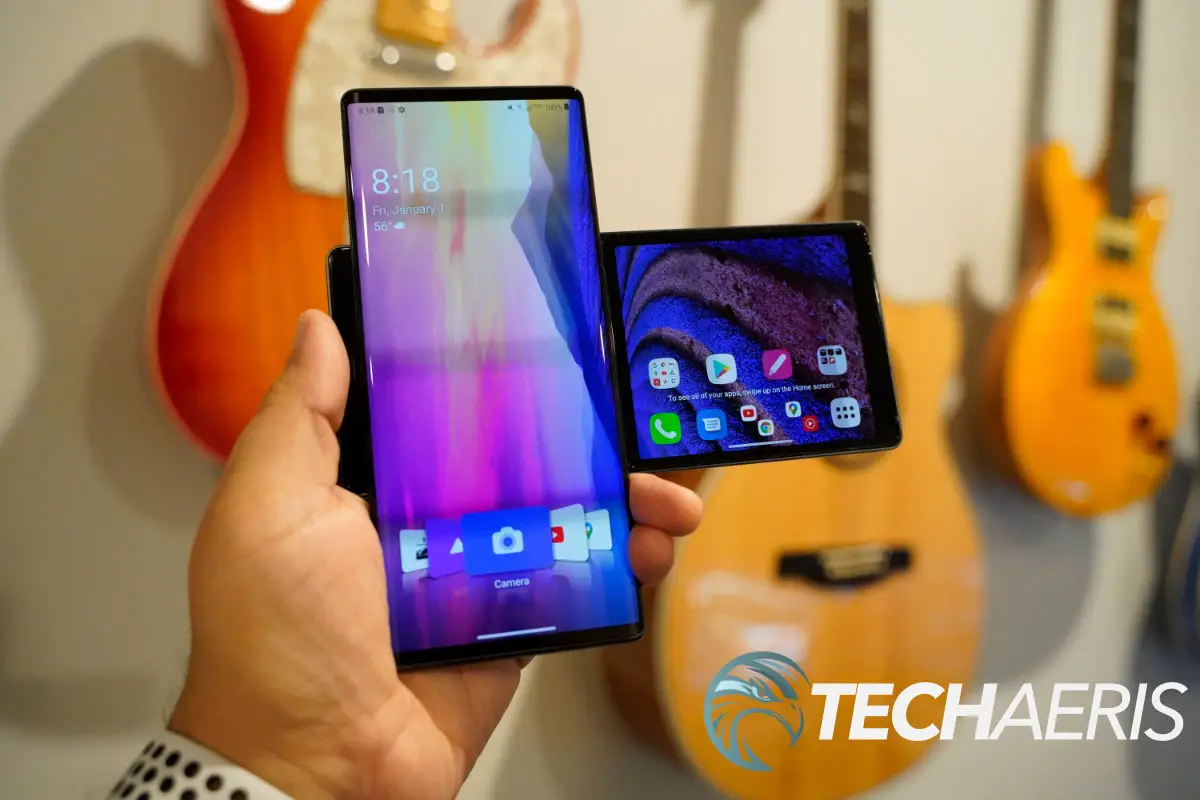
Display(s)
The main display on the LG Wing is not unlike the displays you’ll find on other flagship LG phones. It is a 1080 x 2460 6.8″ panel with 395ppi and an 87% screen-to-body ratio. That screen-to-body isn’t nearly as high as other panels, but it’s not noticeable. The left and right bezels are slim, with the top and bottom slightly thicker but not crazy. I’m sure the lower ratio has to do with the main panel’s moveable nature and keeping the cost down since there is a second display.
Like any other LG display, the LG Wing main display is vibrant, colorful, punchy, and offers a brilliant color spectrum. This display is very similar to that of the LG Velvet and offers only a 60 Hz refresh rate, which may disappoint some spec-obsessed users.
The smaller 3.9″ display is also colorful and vibrant and offers a lower resolution. It’s fine, but certainly not groundbreaking in terms of display technology. Really, the star of the displays here is the ability to rotate the main display and have two displays being used at once.
So what is the rotating display good for on the LG Wing? Why would you want this phone? Well, let’s be real here, like other unique devices, the LG Wing doesn’t always play well with many apps. Many popular apps don’t format well to the landscape screen orientation and are sometimes unusable. So don’t jump into this expecting perfection; there is a price to pay for early adoption.
That being said, there is an odd satisfaction in rotating the display and feeling and hearing the mechanics work. There is no question that the LG Wing hardware was well thought out, and the build quality is stellar.
Some of the use cases for the LG Wing are obvious, such as the camera and utilizing the gimbal feature with that second display. Of course, there is gaming and video consumption, such as watching Disney+ or Hulu. You can also use the bigger display for documents and email while using the bottom display for texting or social messaging.
But as we mentioned before, many apps just don’t look that great in landscape and are really made to look best in portrait. Maps is one of those apps; while it works in landscape, it just doesn’t offer its best in that orientation. One saving grace is the ability to open an app before you flip the LG Wing display, then turning the main display back to portrait. This puts the smaller display on the side instead of the bottom.
I could go on for a long time discussing the displays and their function, or lack thereof. The bottom line is this. Both OLED displays are great looking displays, although some may scoff at the resolution and refresh rate. It’s the usefulness of the rotating display you will have to determine for yourself. For some, it will work out well; for others, not so much.
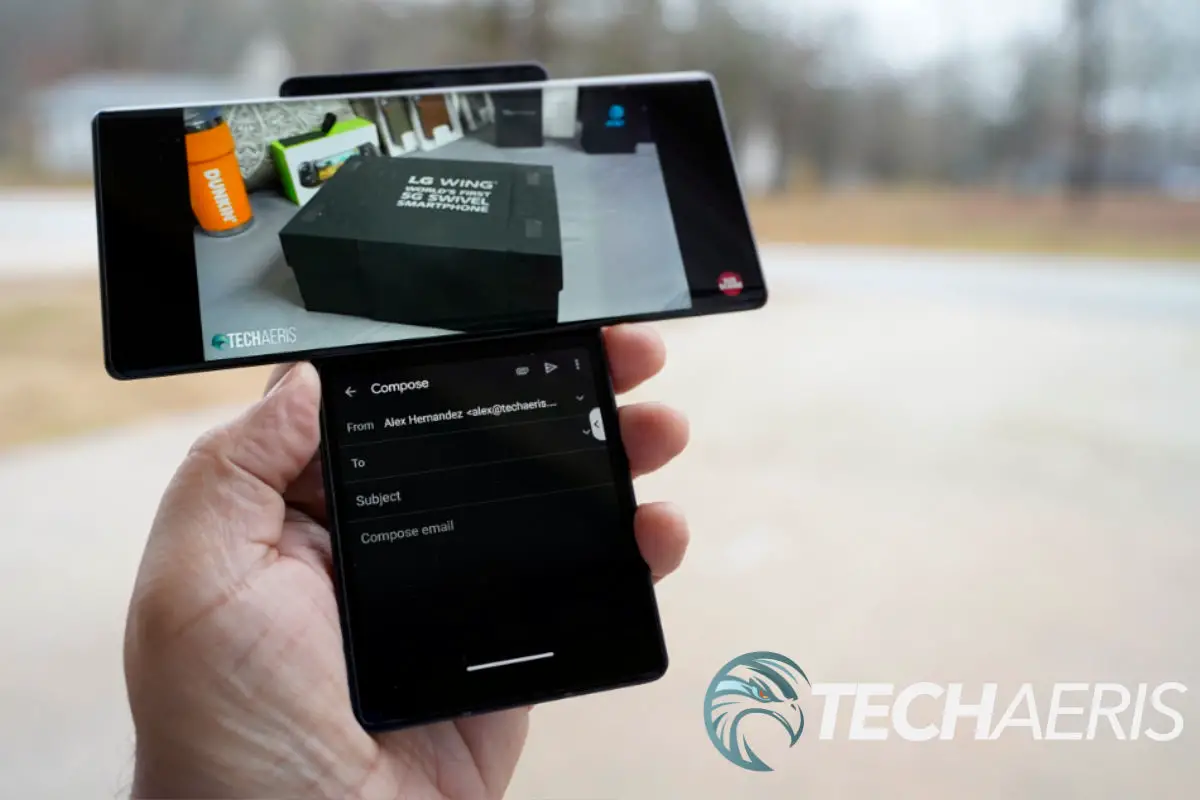
Software
There isn’t much to say about Android 10, it continues to improve, and OEM’s are doing a better job of making better UI’s. LG’s UI is much improved, and it looks great.
Our version of the LG Wing is a Verizon version, and there’s plenty of Verizon bloatware here, too much. As of this review, we understand that the Verizon version has an upcoming software update that is supposed to make the rotating display more functional with other apps.
One core software feature is the ability to open two apps at once on the two displays. This can be set up through settings in the display section. If you find you use two apps together frequently, you can have both those app icons on the screen ready to select, and they will open at the same time in dual screen mode.
Overall, the software is your run of the mill LG and Android software; it works well.
LG Wing Gallery
Performance
The Snapdragon 765G and Adreno 620 combo do an excellent job of pushing the LG Wing through most everything. The interesting thing is, the horsepower being used here is identical to that of the LG Velvet, but the performance experience is different.
With the LG Velvet, I experienced some lag and stutter in some apps; with the Wing, none of that seemed to be present. When opening apps on the Velvet, there seemed to be a slight pause before the screen responded. None of that was an issue on the Wing.
Basic functions all worked smoothly, scrolling, pinch-to-zoom, email, social media, documents, browsing photos, web browsing, and most of the day-to-day functions we all perform on the phone.
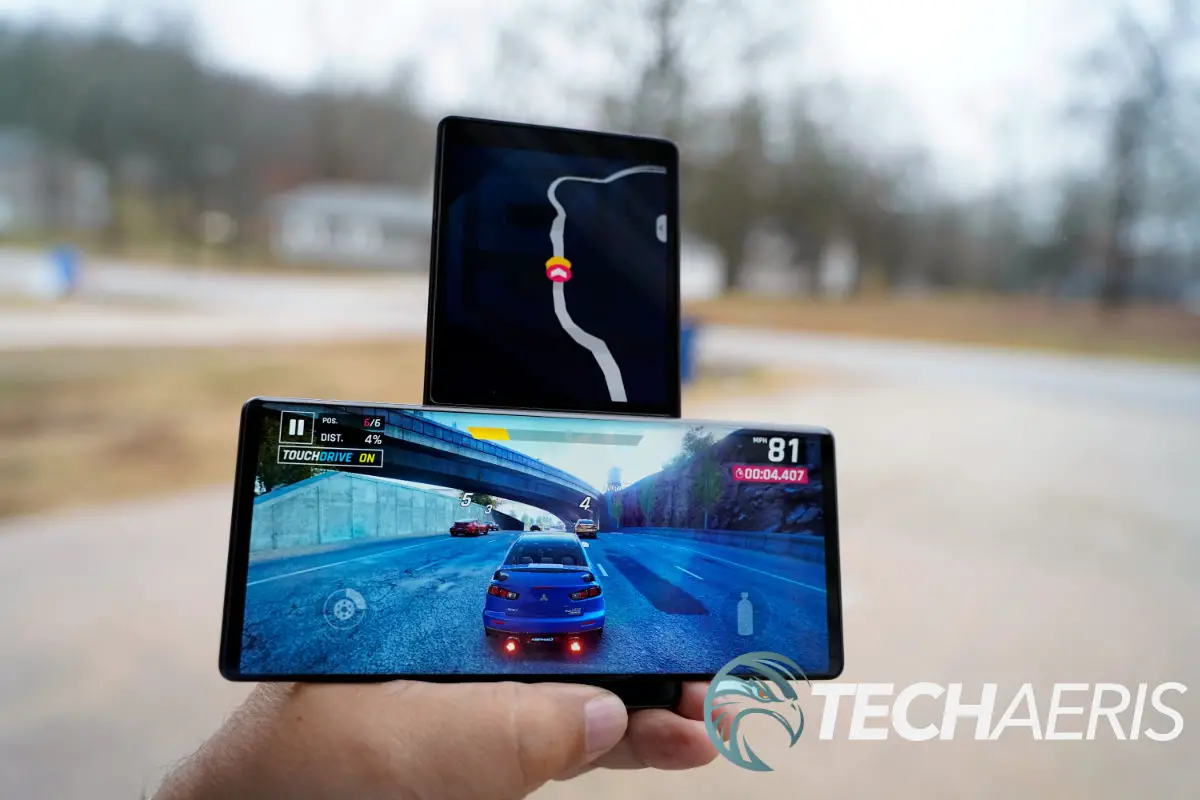
Gaming was good, and with games that support both displays, it’s fascinating. For example, the included Asphalt 9 Legends game uses the main display as your racing screen and then displays your map in the smaller display. It will be great to see more games take advantage of the dual displays giving gamers more information and making the gaming experience much better.
Overall, the performance felt stronger on the LG Wing than on the Velvet, with everything running very smoothly. This could also be due to the 8GB of RAM that this phone offers versus its cousin, the Velvet.
Speakers/Sound
The speaker quality isn’t one of the LG Wing’s strong points here. The speaker is your basic smartphone speaker and isn’t great for movies or music. At least in the capacity of caring about sound quality.
Like many other smartphone speakers, it does excel in being used for calls and video chatting.
Camera
The cameras on the LG Wing are certainly an upgrade over its cousin, the Velvet. Here is what you’ll get in terms of specs on these cameras:
- Rear Main Camera(s):
- 64 MP, f/1.8, 25mm (wide), 1/1.72″, 0.8µm, PDAF, OIS
- 13 MP, f/1.9, 117˚, (ultrawide), 1/3.4″, 1.0µm
- 12 MP, f/2.2, 120˚, (ultrawide), 1/2.55″, 1.4µm
- Front Camera: Motorized pop-up 32 MP, f/1.9, 26mm (wide), 1/2.8″, 0.8µm
I’ll start with the 32MP front-facing camera, which is housed inside the frame of the Wing. When you choose the front camera, it will pop-up from the chassis in a smooth fashion. My only concern is dust and debris getting caught inside, but only time will tell.
The front camera delivers some good results and does an excellent job in good lighting; low light is acceptable but not stellar.
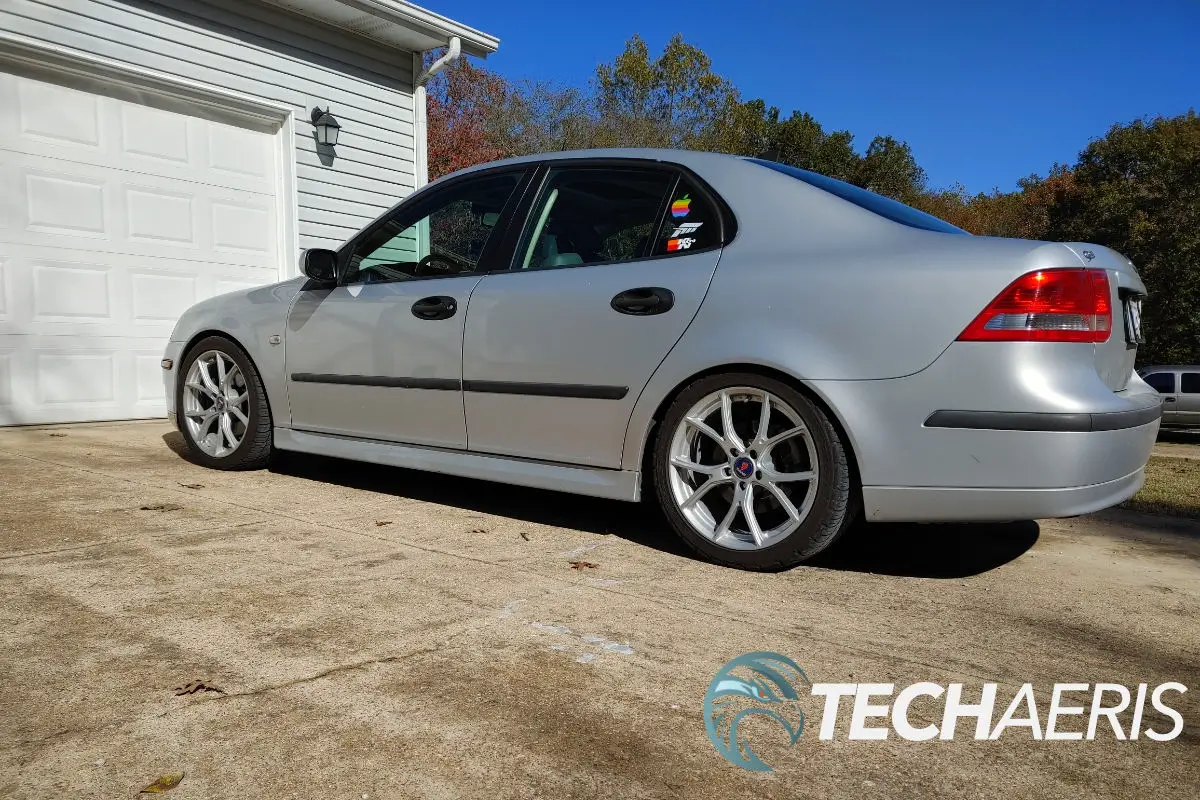
The three rear cameras also deliver great picture quality, especially in optimal lighting; low lighting is better than other LG phones, but the photos can get grainy when lighting is shallow. I think most photos in places like bars and ambient restaurants should come out fairly well.
Most users are going to point and shoot but for those who like the extras, there’s the usual array of options in the camera settings.
The one exciting feature of the LG Wing is the gimbal feature. When you have the screen flipped out, the camera will go into video/gimbal mode. The second screen has a virtual joystick allowing you to move the camera much like you would a gimbal. It’s a nifty little feature. The only downfall is that it is locked to a 1080p resolution, so you can’t use the gimbal in 4K mode.
Overall, the cameras are really good, although not as good as a true flagship device. There is room for improvement, but most users should be happy with the results.
LG Wing Camera Samples Gallery
Reception/Call Quality
Not much to cover here. Reception on Verizon has always been excellent in almost every area I am in. There are a few exceptions when we travel through less populated areas, but we always manage to at least have service. Call quality is also excellent.
Battery Life
The LG Wing has a 4,000mAh battery, which is 300mAh smaller than its cousin, the Velvet. The Wing also has a second display that will eat up more juice, and interestingly, it’s thicker than the Velvet.
Because of this, the Wing battery life isn’t as good as the Velvet, but I still managed to use it all day without charging. Of course, that’s with basic and normal use, no gaming or long YouTube runs.
If you plan on gaming on this phone for long stints, then you’ll probably need to keep it plugged in, or you’ll need to recharge at some point throughout the day. There is QuickCharge 4 for up to 28W adapter support, a plus for those who need to charge quickly.
Overall, the LG Wing does fine on battery life when being used for normal day-to-day things. Most people should get a full day unless the plan is to play hours of games or watch the LOTR extended versions on it.
Price/Value
The LG Wing isn’t cheap, but it’s also not unreasonable. Other devices that sport a gimmick like this tend to be outrageously expensive; the LG Wing will set you back US$999.99.
That’s basically the same price as most other flagship smartphones on the market. While the Wing doesn’t have flagship specs, it does offer a different experience that helps give it value to the right audience.
Wrap Up
The LG Wing isn’t for everyone. There are just a few out there that will want to give this smartphone a try, and those people will thoroughly enjoy it. There are also a handful of users who like to try new tech out and for those people, well, using the LG Wing is pretty fun, and it’s certainly a conversation starter.
Overall, the Wing isn’t for those who aren’t really interested in trying new and unique devices. This is a phone for the more adventurous, willing to deal with a few annoyances and compatibility issues to enjoy something different. I think LG made the right choice in pricing this where they did. It’s accessible and not wallet crushing giving curious tech users a taste of a different world.
In some of our articles and especially in our reviews, you will find Amazon or other affiliate links. Any purchases you make through these links often result in a small amount being earned for the site and/or our writers. Techaeris often covers brand press releases. Doing this does not constitute an endorsement of any product or service by Techaeris. We provide the press release information for our audience to be informed and make their own decision on a purchase or not. Only our reviews are an endorsement or lack thereof. For more information, you can read our full disclaimer.
Last Updated on February 3, 2021.
LG Wing
US$999.99Nailed it
- Very solid build quality, feels more than premium
- Outstanding display's, everything you'd expect from LG
- Android 10 with LG's skin is very nice
- Solid performer
- Great cameras all around for most users
- Good battery life in our estimation
Needs work
- Weak speaker
- Concern over dust and debris getting in moving parts
- Not enough apps that can use the dual screen
- Gimbal mode can only shoot 1080p video

